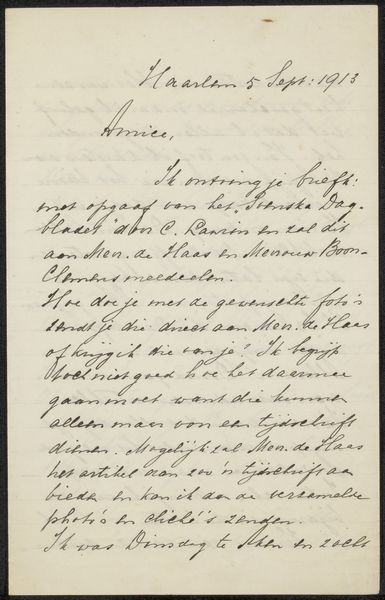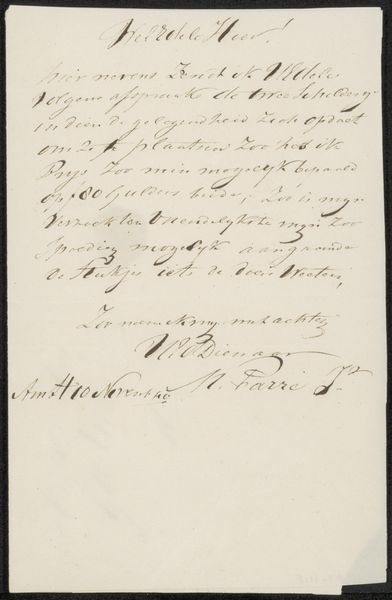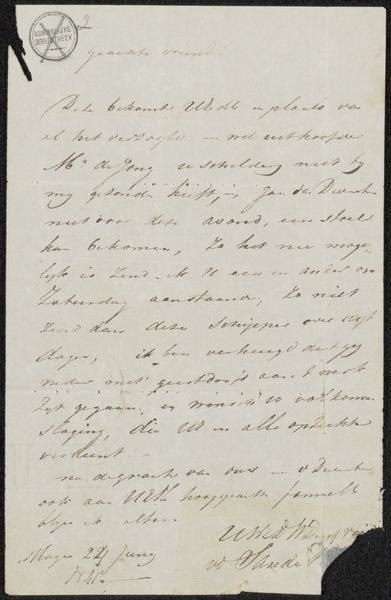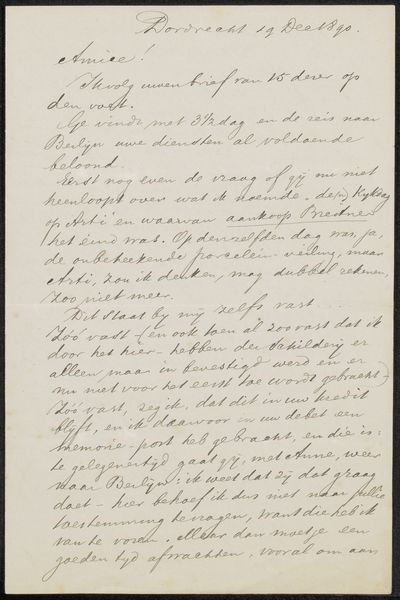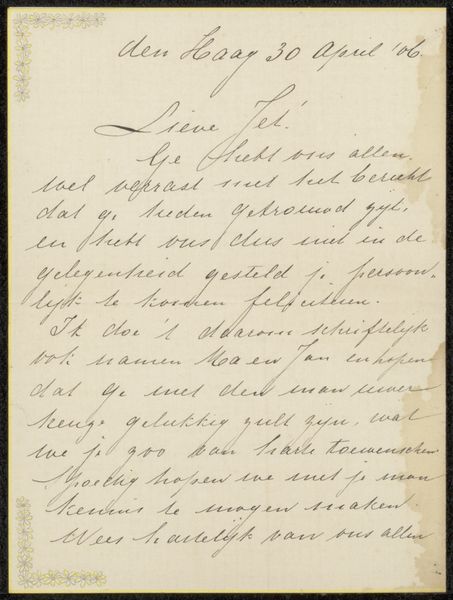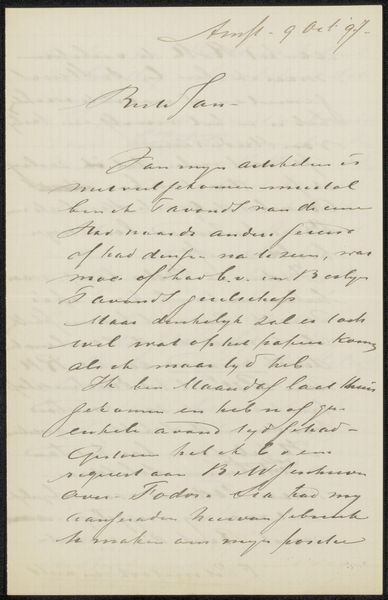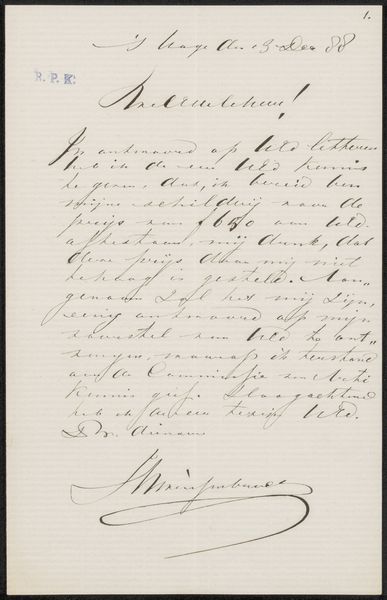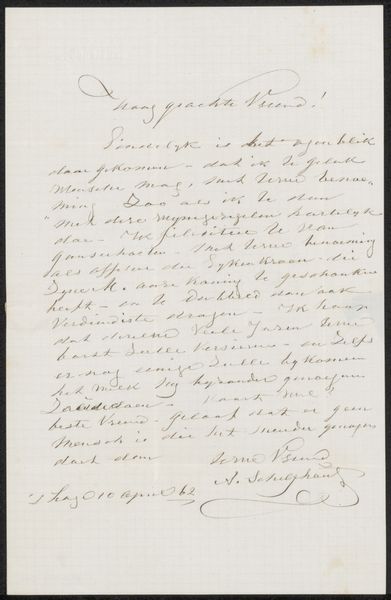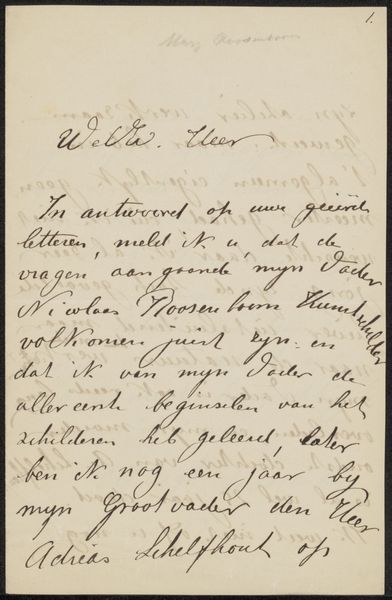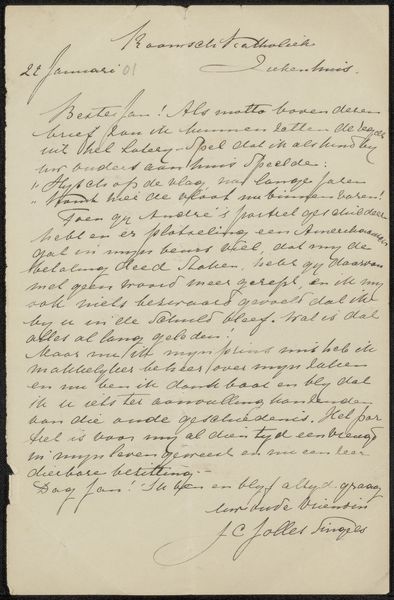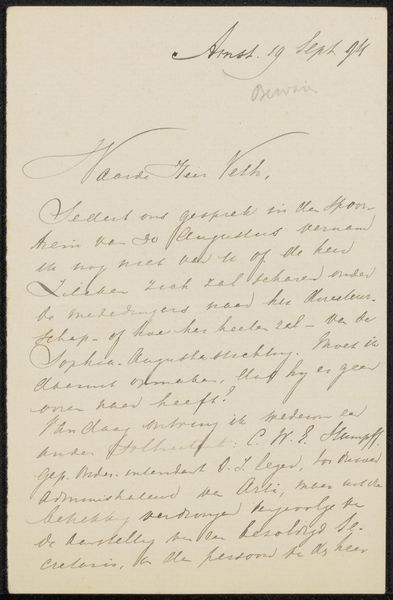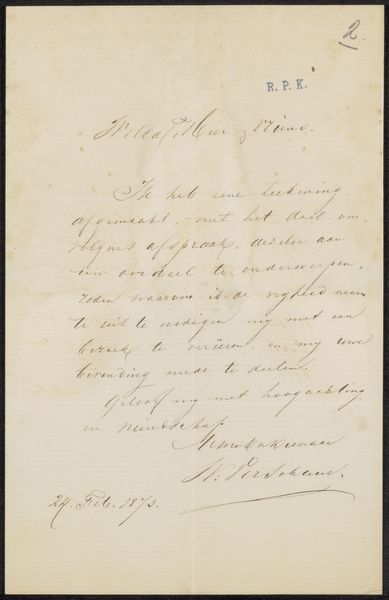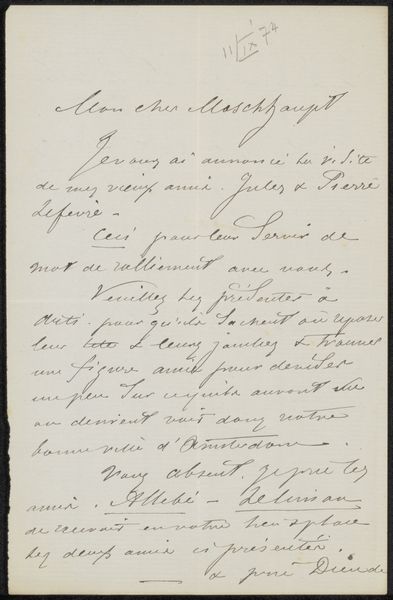
drawing, paper, ink, pen
#
portrait
#
drawing
#
hand-lettering
#
ink paper printed
#
hand drawn type
#
hand lettering
#
paper
#
personal sketchbook
#
ink
#
hand-drawn typeface
#
intimism
#
pen-ink sketch
#
pen work
#
sketchbook drawing
#
pen
#
sketchbook art
#
calligraphy
Copyright: Rijks Museum: Open Domain
Curator: This work, entitled "Brief aan Pieter Haverkorn van Rijsewijk," is believed to date to 1892. Margaretha Roosenboom used pen and ink on paper to create it. What's your initial reaction to this piece? Editor: It feels so intimate. The cursive script, the way the ink bleeds slightly into the paper. It evokes a real sense of personal correspondence. Curator: Absolutely. I'm immediately drawn to the texture of the paper itself. You can almost feel the fibers. Knowing Roosenboom was a painter known for her still life and genre scenes, it is compelling to see her skill also manifest within the intimate and often utilitarian process of correspondence. Editor: Yes, and that is important, especially when we consider that in the late 19th century, calligraphy was both an art form and a crucial skill. A woman's handwriting reflected her education and social standing. What did the act of letter-writing itself signify socially? It’s fascinating to see it presented this way. Curator: Precisely. Considering Roosenboom's training, we can also consider this beyond handwriting. Look at the precision in the curves and lines, the careful consideration given to the spacing. This letter is not just a means of communication, it's an act of artistic production. Even her choice of materials, ink and paper, speaks to a specific kind of materiality of the era. It really questions how we understand "art." Editor: I agree, thinking about her broader artistic context opens up questions of viewership as well. Letters exist both privately and publicly; how the family receiving this letter framed or displayed this object offers new avenues for interpretation. This act itself places value and meaning onto Roosenboom's process and product. Curator: It prompts us to think about how Roosenboom and her contemporaries negotiated the roles of artist, artisan, and woman, challenging expectations of labor and creativity within a specific historical moment. Editor: Indeed. I appreciate how it brings to the fore so many details related to art history and the process behind material production in this era. Curator: For me, the sketch illuminates both the private artist, and larger trends and dynamics of art production itself.
Comments
No comments
Be the first to comment and join the conversation on the ultimate creative platform.
